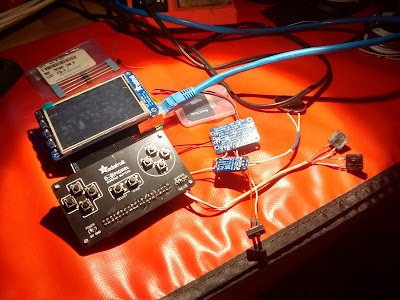The next step of my hand tool journey was to make a traditional joiner's mallet. The joiner's mallet is obviously used for hitting things, but mainly for striking the handle of a chisel when chopping mortises.
The typical style for this mallet is a rectangular head with a handle through the middle. The Woodwright's Shop has a good episode (Season 37, Episode 6) on making this type of mallet. Paul Seller's also has a great series of videos on making these, and that's generally the process I followed.
I used some plans that were created by Chris Schwarz based on a mallet made for him by Roy Underhill. It's based on traditional joiner's mallets that have been used for centuries.
I made the mallet head from a live oak log given to me by a friend. It spent a few years drying in my garage before I started working on it. The handle is made from ash that I cut from a tree in my yard. The live oak is really difficult to work with due to its density and the interwoven grain, but it looks beautiful and is very durable. The ash was a dream to work with by contrast.
I learned alot of new techniques with this project:
- Working with difficult grain
- Working with very hard wood
- Splitting logs with a wedge and sledge
- Turning logs into lumber
- Cutting deep tapered mortises
I'm very happy with the end result. I've been using the mallet almost every day for weeks and it's been a joy to use. I'd highly recommend this as a beginning project for new woodworkers. Not only do you learn alot in the process, but you get a new tool with a centuries-old lineage.
